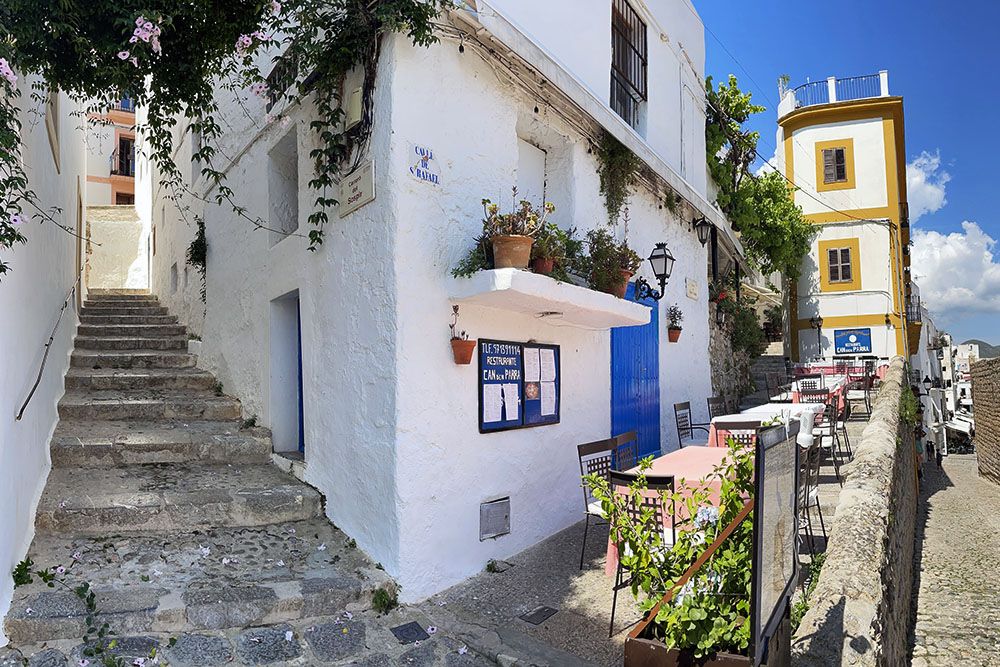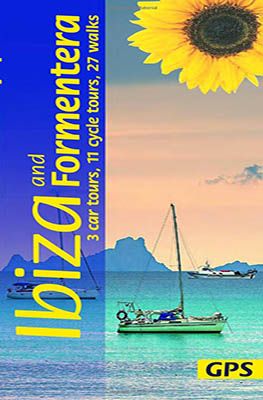The Spanish island of Ibiza has attracted travellers from all over the world for centuries. Among young people, this magical island is particularly known for its vibrant nightlife. In June, however, we got to know another island. Namely, a beautiful Mediterranean island full of nature and culture, and with a wonderfully relaxed atmosphere. We visited beautiful beaches and particularly interesting historical sites. What’s more, we went on some wonderful hikes. In this blog, we would like to tell you why the island has conquered our hearts.
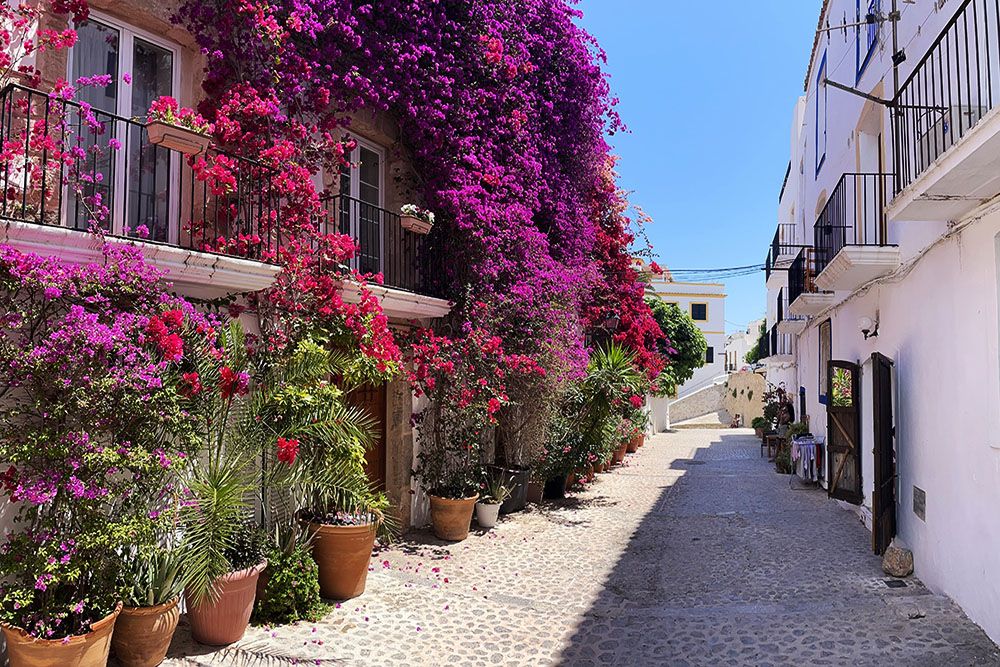
History of the island of Ibiza
Ibiza has a rich and fascinating history. From the ancient Phoenicians to Moorish rule and the influence of hippy culture, every era has left its mark on this enchanting island. The island’s history dates back to the 7th century BC with the arrival of the Phoenicians. They settled on the southern coast, where Ibiza Town is now located. After the Phoenicians came the Carthaginians, who made the island a prosperous trading post and spiritual centre. They also introduced salt mining.
In the 2nd century BC, Ibiza was conquered by the Romans. However, apart from salt production, they placed little value on the island. After the fall of the Roman Empire, Ibiza fell into the hands of first the Vandals and later the Byzantines, and then the Moors. Moorish rule lasted almost five centuries and left its mark on the island’s architecture, agriculture and language.
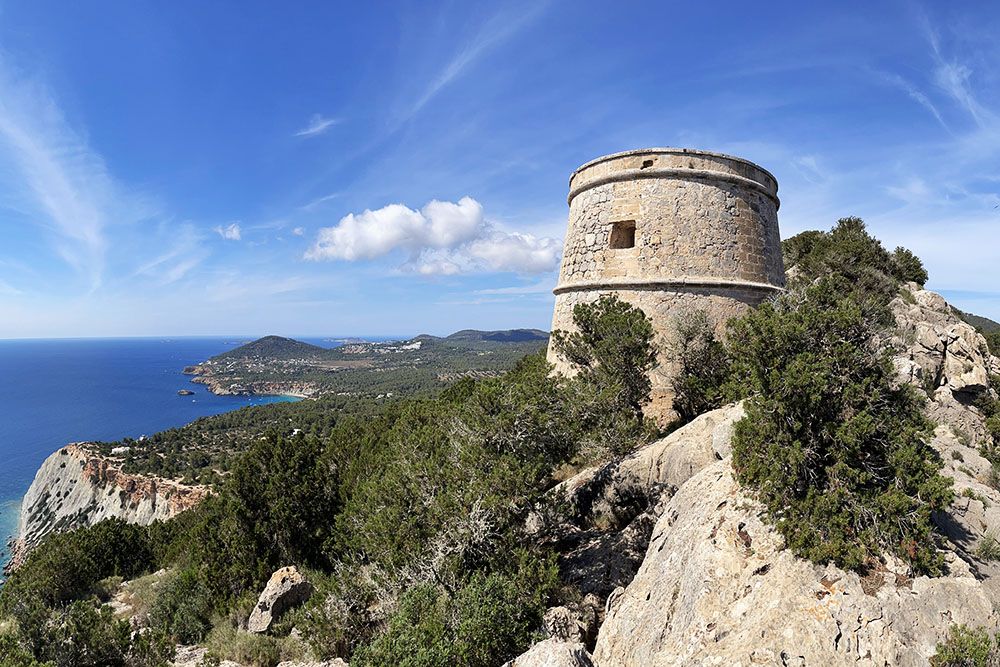
Ibiza was conquered by the kingdom of Aragon in 1235. But along with neighbouring island Formentera, the island enjoyed a degree of autonomy. In the period that followed, Ibiza was regularly besieged by the Turks and by pirates from North Africa. Defences were built in response, such as the old city walls of Ibiza Town, which can still be admired today.
In the 18th century, Ibiza came under Spanish rule. The island then experienced economic stagnation and emigration until the mid-20th century. At that time, artists, writers and hippies discovered the island. Hippie culture flourished in the 1960s and 1970s. Ibiza then becomes a global haven for free and creative spirits. In the 1990s, the island grew into the party island of Europe for young people. In recent decades, however, it is more its beautiful beaches and pleasant climate that attract tourists.

What to see and do in Ibiza
Ibiza is so much more than just a party island. Nightlife there is certainly of a different calibre than in the rest of Europe. But even without partying, you can easily spend a week on Ibiza having a great time. Whether you are looking for relaxation, adventure, culture or just an unforgettable time: Ibiza has it all. For example, almost half of the island is forest, and half of that is nature reserve. Not surprisingly, there are countless hiking possibilities in the beautiful natural surroundings. Furthermore, there are many historical sights and – for the enthusiast – extensive wellness options such as yoga.
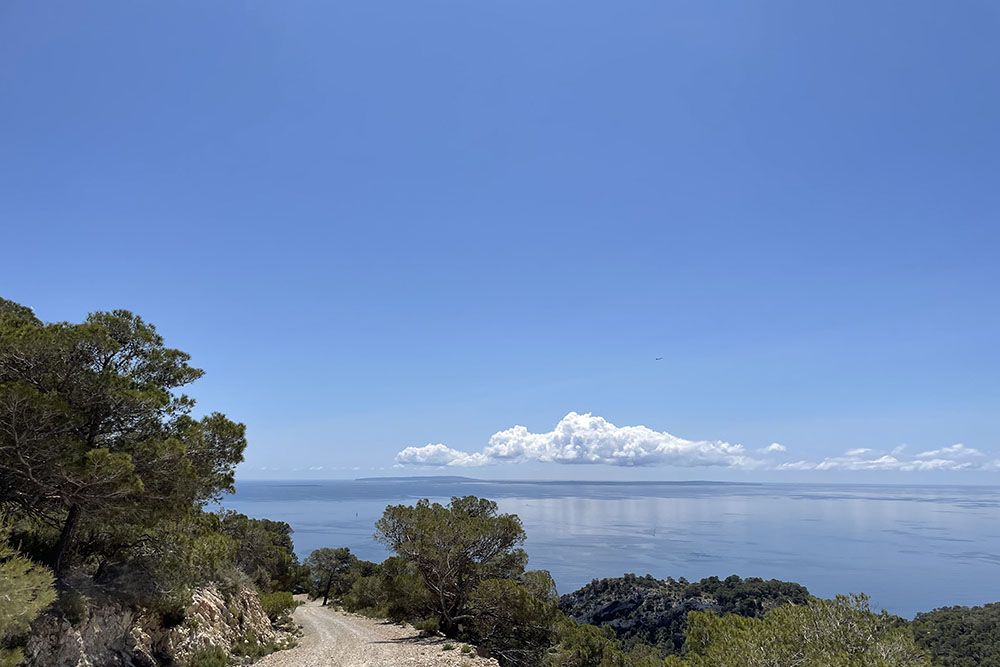
Hiking in Ibiza
Ibiza offers a wealth of natural beauty and stunning landscapes. The island is home to many hiking trails that lead you to breathtaking views of the coast, azure waters, secluded coves and picturesque pine forests. During the week we stayed on the island, we hiked every day except at the beginning. Sometimes we even did two hikes in one day! On the alltrails.com site, you will find a comprehensive overview of the hikes you can do on the island. To help you choose, we have already made a selection for you.
Puig des Savinar
We found this to be one of the very best hikes we did on the island. The circular hike is over three kilometres long and leads from the car park along the mountain ridge to an old watchtower: the Torre de los Piratas from the mid-18th century. From here, you have unrivalled views of the two iconic rock islets Es Vedrà and Es Vedranell. On the alltrails.com site you can find the route description and GPS track. You will definitely need the latter as the path can be difficult to find at times. If, like us, you get there in high season, there may be no space left in the car park. We had to park our car a little way away. Not so bad, as the walk along the coast to the starting point is particularly beautiful. And only 1.5 kilometres longer in total.
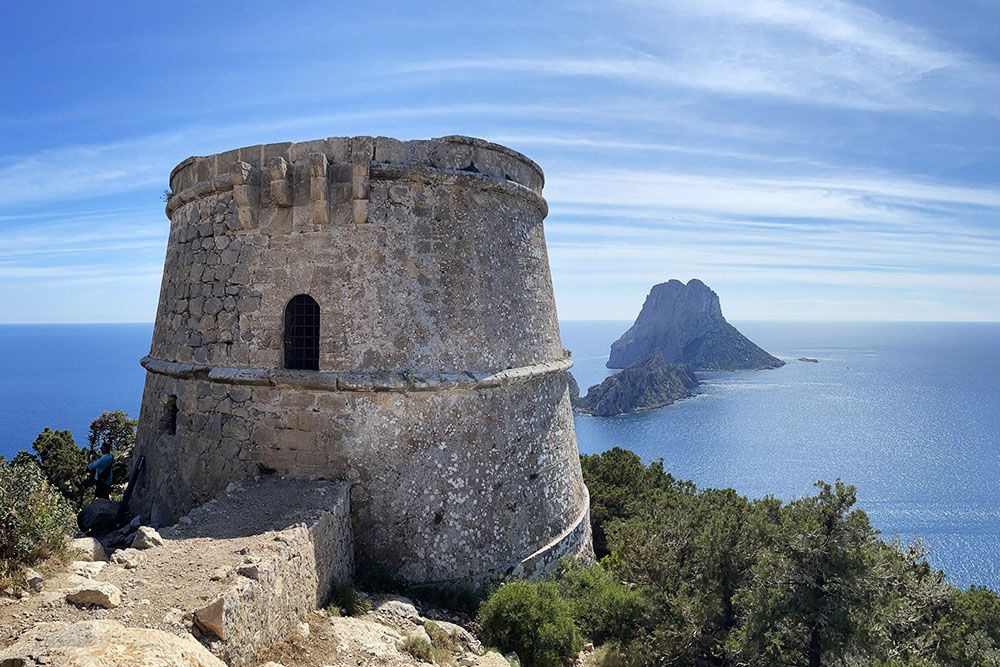
Mirador Las Puertas del Cielo
Another walk almost as good as Puig des Savinar is the one to the ‘Gates of Heaven’. The route offers just a bit more variety as you not only walk along the rock cliffs, but also through beautiful forests. However, because of the differences in altitude and the scrambling and climbing, we did find this one the more challenging. It is a popular hike for not only hikers but also birdwatchers. In addition, we occasionally came across trailrunners. According to the route description, the route is 3.5 kilometres. However, we walked almost four kilometres as we kept finding nicer viewpoints that are not on the route. You can park your car at the nice little restaurant called Les Portes del Cel. This is an excellent spot to get something to eat or drink after your hike!
Sa Talaia
Sa Talaia rises above Ibiza’s green landscape. At 475 metres, it is the island’s highest point. You can get there by 4×4 car but much more fun – we think – is to hike up to it. The start of the hike is in Sant Josep. Opposite the church, you’ll find the first of many brown signs pointing the way. The hike is actually quite easy. Just a little steep at the beginning. But you soon forget that effort thanks to the panoramic views along the way. At the top, you are rewarded with stunning views of the Mediterranean, neighbouring islands and the island’s fascinating coastline. We were unable to find a route description, but thanks to the excellent signage, you won’t actually need one.
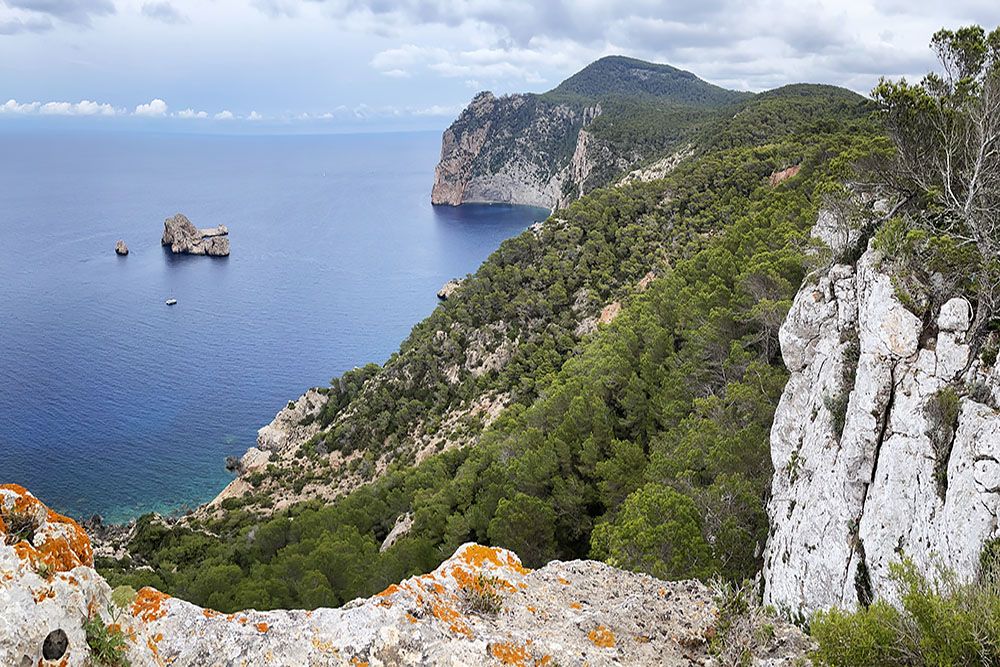
From Portinatx to Moscarter lighthouse
A hike that scores high on many hiking sites is the one from Portinatx to Moscarter lighthouse. And with good reason! From the charming coastal town, you follow a winding path along the ruggedly beautiful coast. You will already see the lighthouse in the distance. At just under halfway through the walk, you arrive at the lighthouse. At over 50 metres, the 1970s lighthouse is the tallest in the Balearic Islands. From here you can return to the starting point in Portinatx. But for variety, our tip is to make it a round trip. It’s a fairly easy walk. But do stay at an appropriate distance from the edge of the cliffs!
The most beautiful beaches in Ibiza
Ibiza is home to an extraordinary number of beaches and coves, some more beautiful than others. Each has its own unique charm and allure. Whether you are looking for a place to relax in peace and quiet or for something livelier, Ibiza has something for every beach lover. Some of these beaches and bays are easily accessible by car or public transport. For other beaches, you have to travel a bit longer to get there. We list some of the beaches we think you should see in Ibiza.
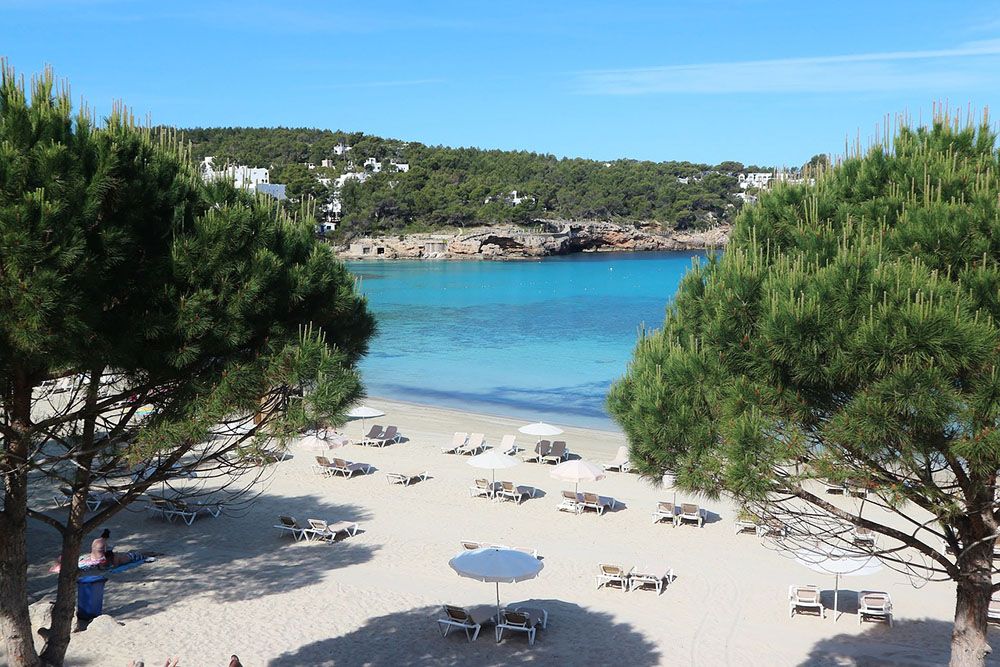
Cala Saladeta
Cala Saladeta is a small paradise beach located on the west coast of Ibiza. Its crystal-clear turquoise waters and fine white sand make this beach a true gem. What makes Cala Saladeta truly unique is its pristine natural environment. The beach is surrounded by lush green hills and pine trees, giving it a peaceful atmosphere. It is the perfect place to relax, sunbathe and enjoy the beautiful surroundings.
Cala d’Hort
Another breathtaking beach to see during your visit to Ibiza is Cala d’Hort. Located on the west coast of the island, Cala d’Hort offers spectacular views of the mysterious Es Vedra island. This imposing rocky island rises from the sea, creating an enchanting landscape. The beach itself is surrounded by cliffs and has crystal-clear waters perfect for swimming and snorkelling. Cala d’Hort is also a great place to enjoy a delicious meal at one of the nearby restaurants overlooking the sea.
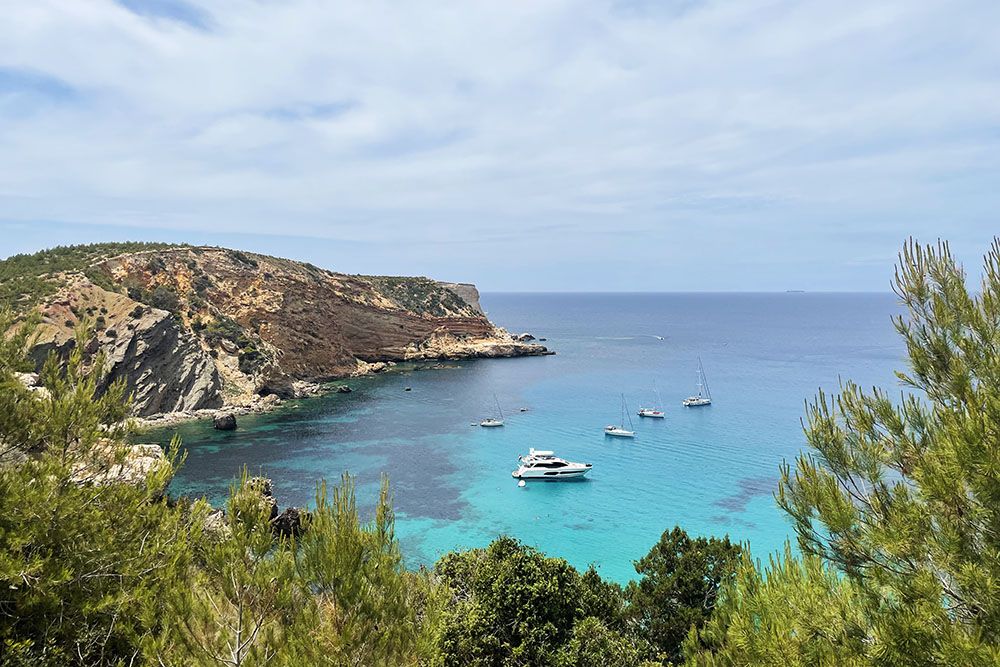
Cala Xarraca
A hidden gem in the north of Ibiza is Cala Xarraca. This secluded beach offers a quiet and serene setting away from the hustle and bustle of tourist areas. Cala Xarraca’s crystal-clear waters are perfect for swimming and snorkelling (or diving!). The surrounding rock formations provide stunning scenery. One of the highlights of Cala Xarraca is the mud pool, where you can smear yourself with natural clay. It is said to be very good for the skin!
Historical sights
Ibiza has a rich history dating back thousands of years. There are many historical sites that bear witness to its past. From ancient ruins to medieval fortresses, here are some of the historical sights in Ibiza that should be visited:
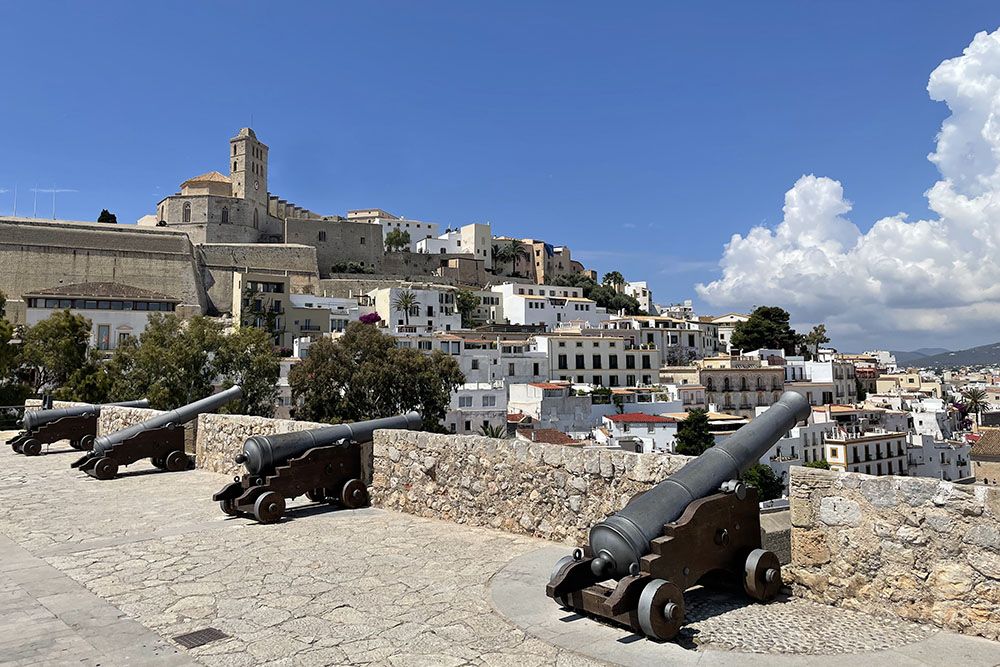
Dalt Vila
Dalt Vila is the oldest part of Ibiza Town, the island’s capital. This old part is the crown jewel of Ibiza’s historical sights. Dalt Vila is on UNESCO’s World Heritage List for a reason. Surrounded by impressive ramparts, Dalt Vila offers a glimpse into the island’s medieval past. We had a great time here for some days. Every day after a walk, we returned to enjoy the picturesque cobbled streets and the cosy cafes and restaurants. There is so much to see and do in the town that we will soon devote a separate blog to it.
Puig des Molins
An ancient Phoenician-era necropolis, located just outside Ibiza town, is Puig des Molins. This archaeological site houses thousands of tombs and burial chambers, providing a fascinating insight into the island’s ancient civilisations. The site is a labyrinth of narrow passageways and underground galleries, each containing the remains of the island’s former inhabitants.
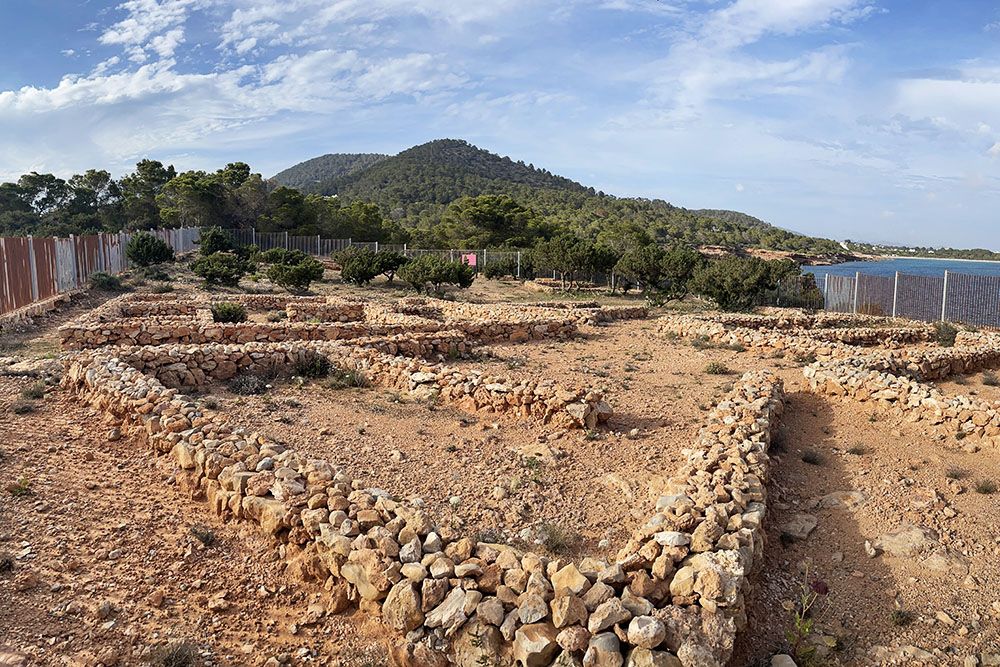
Phoenician settlement Sa Caleta
Another UNESCO World Heritage Site is Sa Caleta, located on the southern coast of Ibiza. This well- preserved archaeological site shows the remains of an ancient Phoenician settlement. Thus, you can still find houses, streets and a defensive wall.
Es Vedrà
While not a man-made historical landmark, Es Vedrà is a mystical and iconic rock formation off the coast of Ibiza. Surrounded by legends and folklore, this uninhabited island is said to be home to sirens and magnetic forces. It is a sight that has fascinated artists, writers and visitors for centuries.
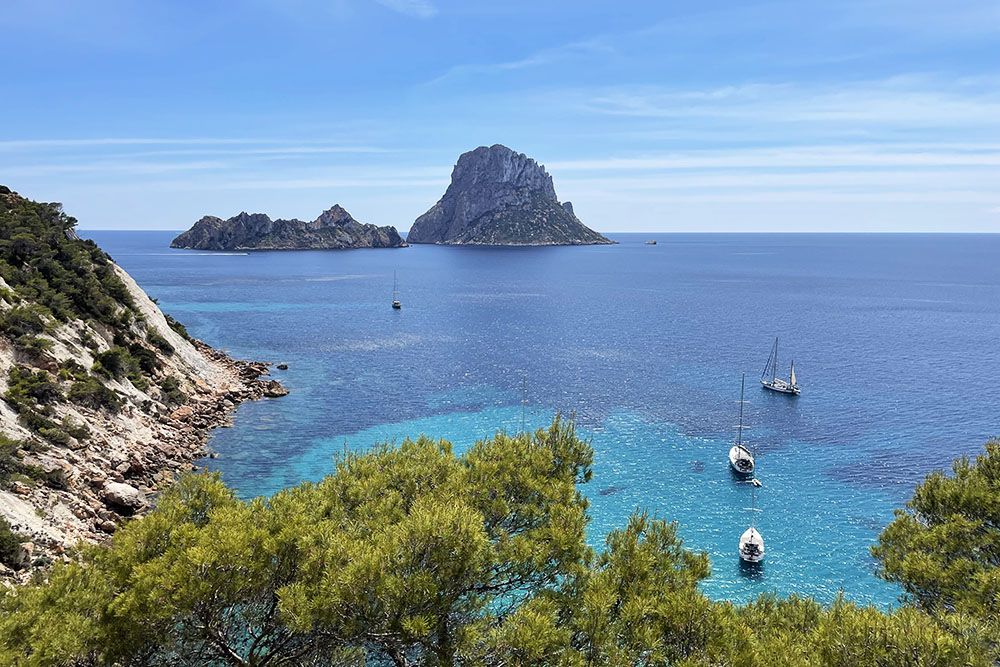
Sant Carles de Peralta
The Church of Sant Carles de Peralta is a whitewashed church in the charming village of Sant Carles de Peralta. Dating back to the 18th century, the church is a mix of traditional Ibicenco and Baroque styles. Decorated with fine details and a bell tower, the church’s whitewashed walls contrast beautifully with the azure Mediterranean Sea. There is a serene calm inside the little church. You will find beautiful religious works of art, including ornate altarpieces, statues and frescoes.
Santa Eulària
The Church of Santa Eulària is a beautiful church fortress with observation tower on the ‘Puig de Missa’ hill. We passed by here by chance and decided to stop for a moment to explore the extraordinary building. The main nave was built in the 16th century and was extended a century later with the two side chapels. One of the chapels has beautiful frescoes that were only recently unveiled. There is a walking path around the church and the adjacent, special cemetery. Really worth the detour! You’ll find the church and cemetery in the village of Santa Eulària des Riu.
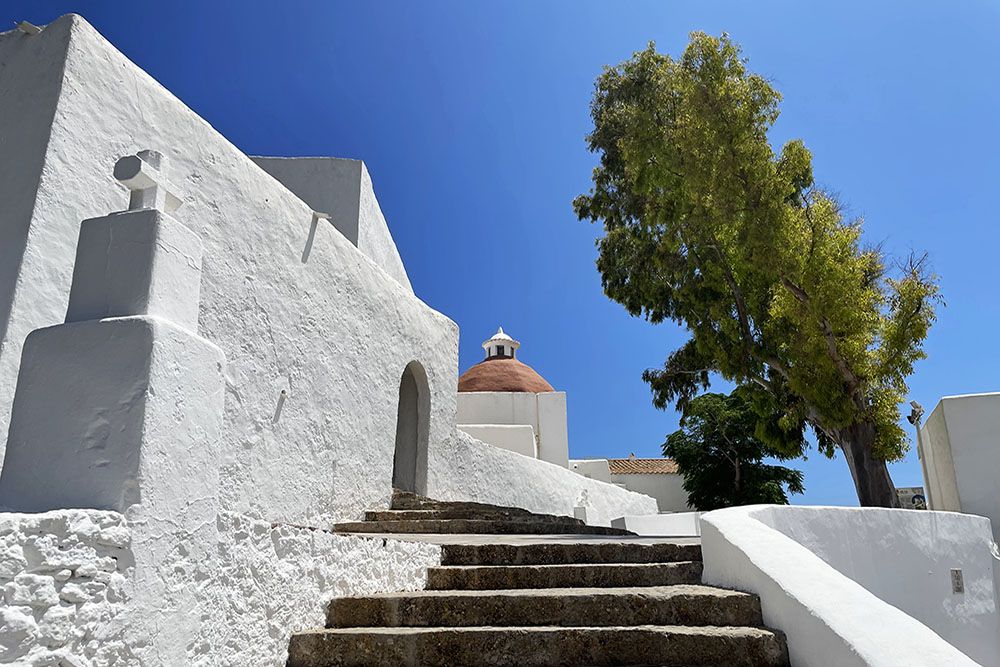
Answers to frequently asked questions about visiting Ibiza
Ibiza belongs to Spain's Balearic Islands group. These islands are located in the Mediterranean Sea east of the city of Valencia.
The best travel time to visit Ibiza is from May to September. In October, the chances of rain increase but for hikers, this is still a fine month. Want really lovely temperatures and not too crowded? Then avoid the months of July and August.
If you mainly stay in the city and only want to make the occasional excursion, a hire car is not necessary. In and around the city, you can also take a taxi or Uber. Outside, you can use the bus. Like us, do you want to do a lot of hiking, or do the beautiful beaches attract you? Then a rental car is definitely not a luxury.
For decades, the island of Ibiza was known for its vibrant nightlife, world-famous clubs and electronic music scene. But also for its bohemian atmosphere, which attracts artists, celebrities and partygoers from all over the world. Today, the island also enjoys particular fame for its beautiful beaches, crystal-clear waters and fantastic hiking opportunities.
Formentera is a beautiful island known for its pristine beaches, crystal clear waters and particularly laid-back atmosphere. We found it a wonderful ‘escape’ from
busy Ibiza town. Just the short boat trip to it is fun to experience. Whether it is worth a visit depends on your need for tranquillity. By the way, soon we will publish a blog about our visit to Formentera.
If you only come for the capital and nightlife, count on about four days. If you want to do a lot of hiking there, plan at least a week.
The best place to stay on the island depends on your preferences. Some popular areas include Ibiza Town for its vibrant nightlife, Playa d'en Bossa for the beach clubs and Santa Eulalia for the relaxed atmosphere. We ourselves stayed in a flat just steps away from Ibiza Town's promenade. Although we also love the peace and quiet, we found this location ideal. Indeed, within walking distance are numerous extremely pleasant terraces and restaurants. We did seek out the peace and quiet during the day while walking or at a trendy beach bar.
